
DO YOU REMEMBER
Home NEW Updates About Us Historic Sites Consultants Contact Us Terms/Conditions
|
/
|
|
IT WAS THE AGE OF Research by Gordon Freegard
|
|
IT WAS THE AGE OF The Coolgardie Safe, the Miller kerosene lamp, Kelvinator Kerosene Fridges, Metters Wood Stoves, Namco Pressure Cookers. |
|
|
 |
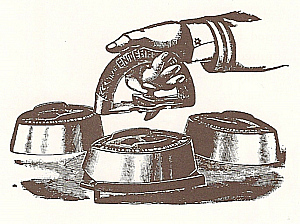 |
|
|
Exhibition Candles, Hurricane Lamps, Tilley Lights, Taylor’s Refrigeration Paint, whitewash, Kalsomine, Brunswick Black, Zebra Stove Polish, Shelltox Fly Spray,, |
|
|
|
|
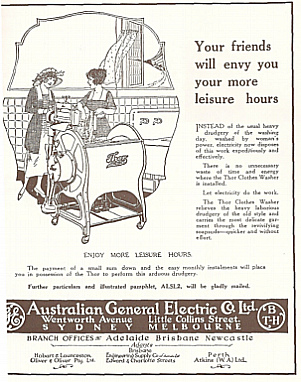 |
|
Reckitts Bag Blue, Burford’s No 1 Bar Soap, Silver Star Starch, washing soda, Sanoper Sand Soap, Sunlight and Velvet Bar Soap, Peak Soap, Lux Flakes, Persil and Rinso, Phenyle and Carbolic Disinfectant for the loo. |
|
|
|
 |
|
|
Goddard’s Plate Powder, Wundawax Floor Polish, Relax Polish, Lavendo Furniture Polish, Nugget Shoe Polish, Brasso Polish, Kiwi Boot Polish, Stove Black. |
|
|
 |
|
|
|
Astor Radios, The Player Piano, Edison Gramophones, AWA Radios, Wundaheaters, |
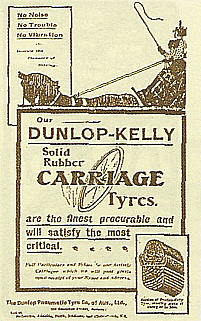 |
|
||
|
Plume Motor Spirit, axle grease, Neptune Petrol, Golden Fleece Petrol, |
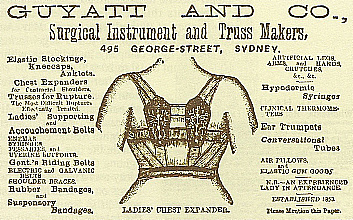 |
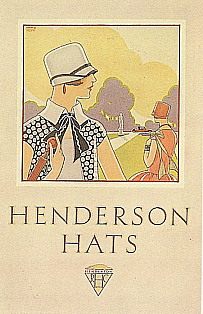 |
||
|
Dancing pumps and button-up boots, whale bone collars and corsets, stiffened nylon petticoats, enormous bloomers (no woman would dare to wear the scandalously brief pants that adorn the trim bottoms of today’s girls), Stamina Wool Suits, Spats, |
|
|
|
|
|
|
Goanna Salve, Ammoniated Quinine, Beecham Pills “worth a guinea a box,” camphorated oil, Clements Tonic, Hypol Cod Liver Oil, Malt Extract, Carters Liver Pills, Seidlitz Powders, Kruschen Salts, Ford Pills, Bex Powders, Hudsons Jubes, Throaties, Bonnington’s Irish Moss, Castor Oil, Molasses, De Witt’s Antacid Powder |
|
|
|
|
|
|
Robur Tea, Amgoorie Tea, Woodson’s Tea, Lipton Tea, Bushells Coffee Essence, Sunshine Powdered Milk, Yorkshire Pudding, Dumplings, Baking Powder, Sarsaparilla Cordial, HP Sauce, Holbrook’s Sauce, Horlicks Malted Milk, Coca Cola, |
 |
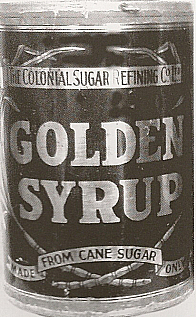 |
 |
|
|
Watsonia Smallgoods, Butter churns, Dripping, Lard, Butter Pats, Milk Separators, Scolded Cream, Lister Engines, |
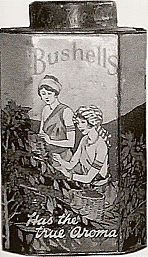 |
 |
|
 |
|
|
|
|
Bushells Tea, Amgoorie Tea, Liptons Tea, Robur Tea, Nestles Condensed Milk, Sunshine Powdered Milk, Coffee & Chicory Essence |
 |
|||
|
Willy Weeties, Samoline, Snap-Crackle-Pop Rice Bubbles, John Bull Porridge, |
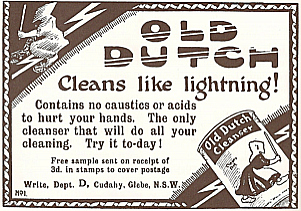 |
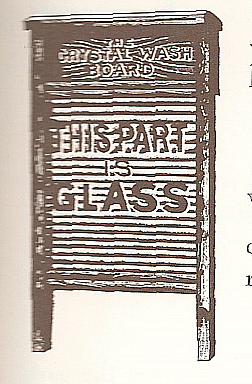 |
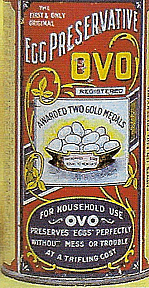 |
|
|
Blanco, fountains-on-hob, Little Clever Mary (a shilling a tin), Tanglefoot Fly Papers (two-pence each), |
|
|
|
|
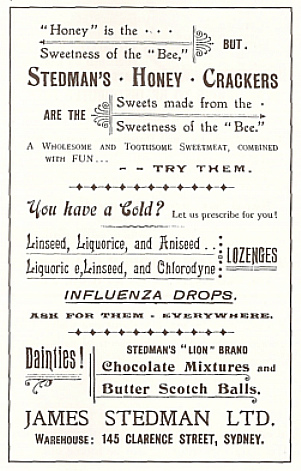 |
|
Mills & Wares Biscuits, Ginger Nuts, Picnic Mixture, Cocoanut Ring Biscuits, Nutties Biscuits, Nice Biscuits, Strathmore Biscuits, Milk Arrowroot, Sao Crackers, Saloon Crackers, Cerebos Salt, Kraft Cheddar Cheese, Kraft Velveta Cheese |
|
|
|
 |
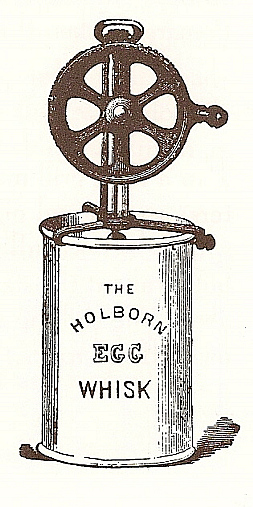 |
 |
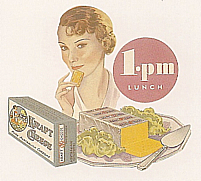 |
|
|
Fowlers Bottling Outfits, Merry Widow Junket Tablets, Blancmange Powder, Sago, Tapioca, Rawliegh Products, |
|
|
|
|
|
|
|
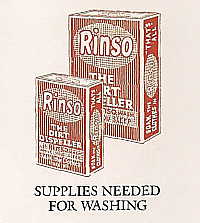 |
 |
|
Cut Throat Razors, Gem Razors, Shaving Brushes, Fauldings Shaving Soap, Lifebuoy Soap, Protex Soap, Lux Soap, Cuticura Soap, Palmolive Soap. |
|
|
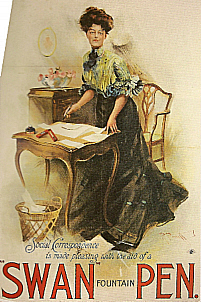 |
 |
|
|
Brownie Box Camera, Negative Film, Ilford Film, Kodak 620 Flim, Photo Album Corners |
|
Meccano Sets, Ping Pong and Bobs Sets, Hornby Wind-up Trains, Pick-up Sticks, Tiddley-winks, Knucklebones, Plasticine, |
|
Skyrockets, Penny bombs, Tom Thumbs, Jumping Jacks, Cartherine wheels, Roman Candles, Sparklers. |
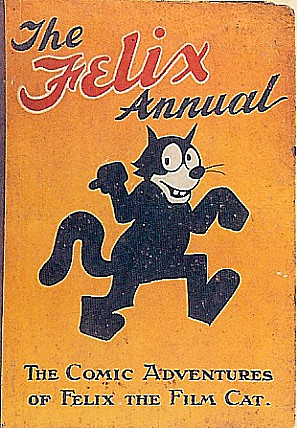 |
 |
||
|
Heckle & Jeckle, Felix, Popeye, Bugs Bunny, Tom & Jerry, Mickey & Minnie Mouse, Donald Duck, Bluey & Curley, Phantom Comics, Speed Gordon, Tom Mix, Hopalong Cassidy, Roy Rogers, Coles Funny Picture Books, Enid Blyton Noddy Books, Secret Seven Books, |
 |
 |
 |
|
|
Singer Sewing Machines, Jones Sewing Machines, Wertheim Sewing Machines, |
 |
|||
|
Brylcreem Hair Cream, Californian Poppy Hair Oil, |
|
|
|
 |
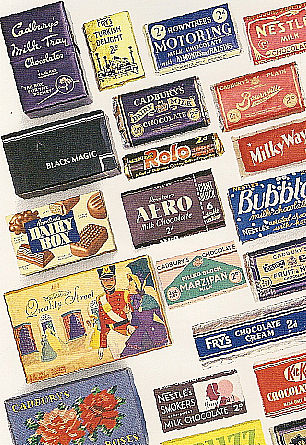 |
|
|
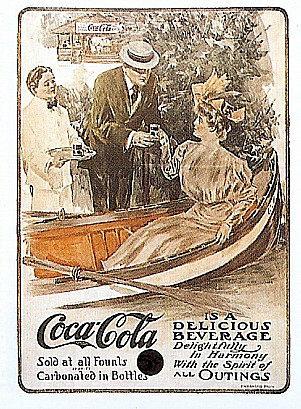 |
|
Aniseed Cough Discs, Choo Choo Bars, Jaffas, Fantales, Freddo One Penny Frogs, Shurbert Bags with Licorice Straw, Penny Sticks, Clinkers, Bananas, Penny Sticks, Columbine Toffees, Plaistowes Sweets, Liquorice straps, Peters Bucket Ice-cream, All-day Suckers. |
 |
|||
|
Charlie Carters, Freecorns, Tom the Cheap, John Allan’s Mail Order Stores, Rowleys Electrical, Thompsons Furniture Stores, Foys Departmental Stores, Vox Adeon Howards, Irene Whytes, Tip Top Meats, Sandovers, Bairds, Boans, Musgrove’s Music Stores, Cox Bros Economic Stores, Cecil Bros Shoes, Corot Fashion Stores, Moore’s Department Stores, Zimpels Furniture, Walsh’s Menswear, Alberts Bookshop, Brown's Milkbar. |
|
Embassy Ballroom, Canterbury Court Ballroom, Ambassadors Cinema, Metro Cinema, Hoyts Plaza Cinema, Savoy Cinema, Glide-away Roller Skating Rink, |
|
|
||
 |
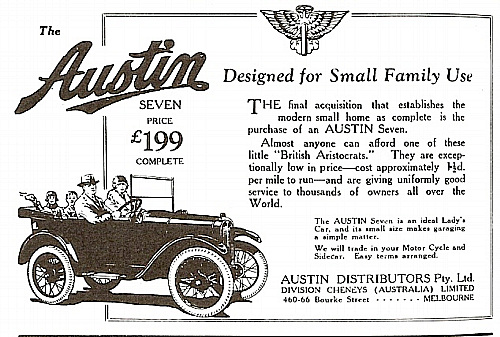 |
 |
 |
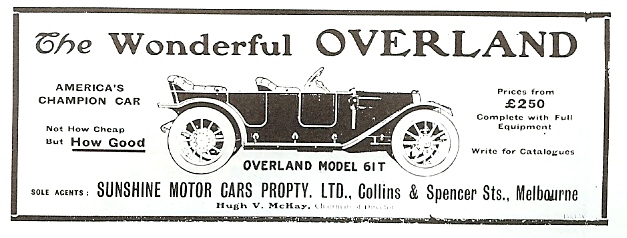 |
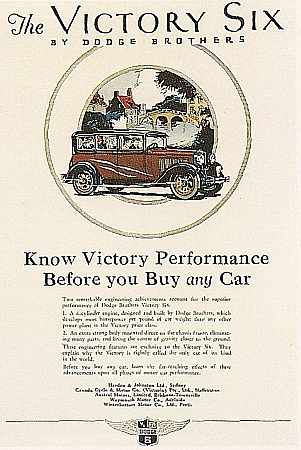 |
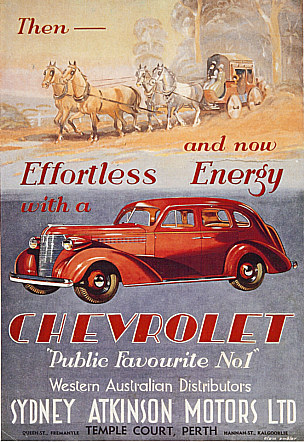 |
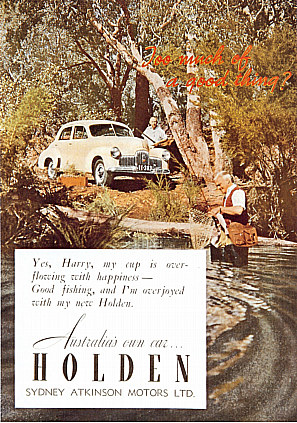 |
|
|
Mortlocks Bros, Winterbottoms Motor Co., Skipper Bailey Motor Co, Sydney Atkinson Motors Ltd., |
 |
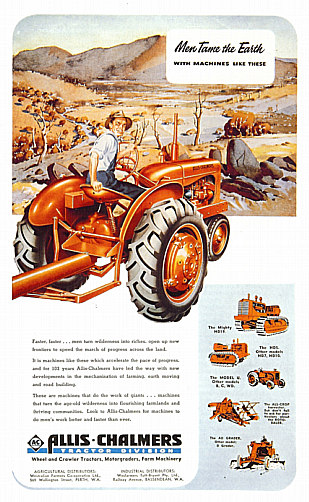 |
|
|
Malloch Bros, Allis Chambers Tractor Division,
|
|
Reference: "Remember When" Robert Opie #1 Click here to go to top of page
|
|
KEROSENE TINS USE Light of the Age kerosene was sold in tins containing exactly four-and-one-sixth gallons (18.9 litres) each, two tins to the case. The tins made wash up basins, buckets, plant pots and, when bashed out flat, many a respectable shed and even dwelling. The deal cases made dressing tables, upholstered chairs not in the style of Chippendale, writing desks. Nobody threw out a kerosene case. Butter came in 56 lb boxes (25 kg), and was cut by the storekeeper into bats. Sugar came in 70 lb bags (32 kg), and the empty bags made aprons, curtains, door mats, fishing and tool bags, tucker box bags, backing for rag mats and anything else you could think of.
|
|
|
|
|
|
KEROSENE TINS MADE INTO BUCKETS #2 |
KEROSENE TINS MADE INTO A BUCKET, A BREAD BIN AND A SET OF STORAGE DRAWERS #3 | |
 |
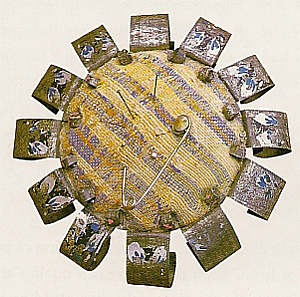 |
 |
| WATERING CAN MADE FROM A KEROSENE TIN #4 | PIN CUSHION MADE FROM A KEROSENE TIN #5 | KEROSENE TIN MADE INTO A DRINK TROUGH #6 |
|
Reference: Article: Cala Munnda A Home in the Forest Image: 1 Remember When - Robert Opie Click here to go to top of page
|
|
RURAL LIFESTYLE OF YESTERDAY In the early 1900's and for many years after,
rural settlers had no modern (1981 definition) facilities for the type of
comfortable and convenient living that is now regarded as normal and not luxurious. Mail and newspaper deliveries, S.E.C (now
Synergy), bottled L.P. gas and flush toilet facilities were non-existent. Ice
was not available in small communities. Preservation of food was achieved with
a certain degree of success per medium of the simple Coolgardie hessian-covered
safe. The hessian sacking was kept wet by dripping water, the supply of which
was in a tray located on the top and into which flannel cloths absorbed water
that siphoned over the edge on to the hessian. The tray needed replenishing
frequently. Kerosene lamps and candles provided lighting:
also comparatively safe hurricane lamps were used for outdoor purposes,
including hanging under a horse-drawn vehicle (largely for identification)
and also by pedestrians for many jobs,viz. feeding horses and milking the cows
before daylight in winter. Torches powered by dry batteries had not been
introduced to the farming community. Kerosene operated refrigeration became available
about 40 years later. These were eventually superseded by electrically-operated
refrigerators (mid 1950's in the Hills) and much later, the deep freeze units. |
|
Heating was supplied by wood fuel for open fireplaces
and subsequently stoves and coppers for laundry and bathroom needs. Square open
topped kerosene tins were used as buckets for transferring hot water from the
copper to washing tubs (tin and eventually, galvanised iron) and from the stove
top or open fire to a tin bath (for those affluent enough to possess such an
amenity) for personal hygiene. Showers were unknown except those rigged up
outdoors per medium of kerosene tin with perforated bottom. There was neither
enough pressure nor enough water conserved in 1,000 gallon (4,550 litre)
rainwater tanks. Nevertheless, the vast majority of people kept clean and
clothes were regularly washed. The only other aids for the laundress were yellow
soap, a round poker stick (usually part of a broom handle) for stirring up the
clothes and then removing them to a tub (if available) and a scrubbing board.
Washing machines an spin dryers were not introduced for several decades hence. White was the colour of shirts for schoolboys and
men's best shirt and most girl's dresses. Blue dungaree trousers and grey
flannel shirts comprised the usual attire for most working men. Incidently, the
present-day popular jeans apparently had their genesis indungarees, but with
the obviously considerable refinement in the process. |
WELL STOCKED EARLY GROCERY STORE #1 |
|
It was a serious offence, incidentally, to leave
taps dripping, as houses only had rainwater tanks. Chip bath heaters superseded
the kerosene tin of hot water. These were the forerunners of the present-day
Braemar type of water heating. The commonplace water bag (still used by country
travelers) was replaced by vacuum flasks and hence the "Esky" some
60 years later. Water for horses during the summer was pumped by hand into a trough
from a well. Kerosene operated refrigeration became available
about 40 years later. These were eventually superseded by electrically-operated
refrigerators (mid 1950's in the Hills) and much later, the deep freeze units. Poultry was generally regarded as a delicacy and
as such was reserved for important functions - weddings, the Festive season and
banquets. Tinned meat (often called "bully beef"
or "tinned dog") washed down by tomato sauce was in the diet of many.
As a major item Libby's sausages imported from Chicago (U.S.A.) was a good
stand-by. Baird's large shop (now taken over by Myers) specialized in country
orders throughout the State. Mixed cases of tinned meat and jams, canned fruit
were popular as well as other grocery and hardware items. Kangaroo meat was utilized by some settlers. |
|
WOMAN PROUDLY DISPLAYING HER KITCHEN #2
|
The most enterprising of the settlers developed
vegetable gardens for home use successfully. Irrigation (gravitation furrow method on a
comparatively extensive scale, introduced at Illawarra in 1911) had to be
attended to at daybreak and dusk. Each dwelling on the Illawarra property was
supplied with a large syringe in case of fire. The main danger was burning wood
falling out of a temporarily unattended stove or open fireplace. This has
actually been an occasional occurrence. Syringes and a bucket brigade were used
in protecting building against bushfires, which were frightening. During a
devastating one about 1912 the native fauna, kangaroos and snakes galore headed
for the creek in the middle of the orchard. The Forest Department, with its
modern burning-off techniques and vigilance has now created practically full
security from bush-fire havoc. Communication was improved by the installation of
manually operated telephones on a few of the properties in the mid 1920's.
These were operational only during standard "business hours" and were
not available at other times unless a re-opening charge was paid and subject to
the consent of the postmistress and also with the proviso of her being home.
Telstra, then known as the P.M.G. Department extended the line for only about
one kilometre from the exchange. Thereafter it was the responsibility of the
subscriber to erect the line (galvanised fencing wire) and for its maintenance. |
|
In the case of Illawarra, 2.5 kilometres was the
distance involved. Much time was taken up inspecting the line and checking the
reason and source of failure after severe storms and with consequent repairs.
It was about 25 years later before most properties had a telephone service and
another 10 to 15 years before continuous automatic telephones were installed. Most ordering of supplies was done per letter
and/or by an occasional visit to Perth. To catch the 7.00 a.m. train at
Pickering Brook, the passenger had to leave home at around 5.00 a.m. and he
usually walked. The return trip left the city at 5.00 p.m. with the person
ultimately arriving home some three hours later. While there were many vicissitudes, the folk
seemed to complain somewhat less than the present generation, as this was the
accepted "way of life" of the era. |
|
The disadvantages of isolation receded
considerably with the general introduction of motor vehicles - also in the mid
1920's. Amongst the first on the scene was the mass produced model
"T" Ford. Secondhand vehicles, Fords, Overlands and Dodges were
acquired by a few settlers. A new, moderately prestigious Oakland Tourer cost
435 pounds ($870) in 1924. All cars were imported and had soft hoods, most of
which could be folded back. Sedan cars had not been developed and were not
available until about 10 years later. The first car with an Australian body, in
that period, was the Essex. It became available at approximately 220 pounds
($440) equivalent to slightly more than the annual wage of an orchard hand. Prominent cars in that decade were in the
expensive range - Studebaker, Hupmobile, Buick, Dodge (a rugged car favoured by
farmers), Hudson and Chrysler from U,S,A,, and Sunbeam, Crossley, Austin and
Bentley from England. Fiat from Italy were also in demand. Then, the best
selling cars in the less expensive range were the Model "A" Ford and
Overland. Subsequently the Chevrolet in the same price bracket probably became
the best seller in the later 1920's and early 1930's. Many growers bought
utilities or trucks (Reo, Chevrolet, International and Fiat, etc.) with one of
the main objects being to sell their produce at the then well patronised open
markets on Friday evenings and Saturday mornings. The starting of motor vehicles was often a problem, particularly in cold weather. The earlier cars did not have a battery as ignition was provided by a magneto. They were started by cranking which was laborious. The Model "T" Ford was notorious for backfiring. Bruised wrists or forearms were not uncommon, or an occasional fracture. Battery operated vehicles periodically had battery problems and were often "flat". Starting was then achieved by pushing (if enough people were available) and when sufficient speed was gathered, the gears were engaged. An instant start was often achieved providing there was no other mechanical fault. Two other methods were often used. |
WOMAN PUTTING FRESH MEAT INTO FLY-WIRED MEAT SAFE #3
|
|
One was a horse and chain attached to the
front of the car to gather momentum. Two persons were required. The driver
needed to be alert so that the horse did not take fright before the chain was
disconnected. Another sure way of ensuring a quick start, even with a flat
battery (which usually had enough capacity for the initial spark) was to
replace the radiator with hot water, which was usually available at the local
hall as a fire was used to heat water for supper. The first Chevrolet trucks had an
"economy" model without a driver's cab and normal seating. The driver
sat on the floor of the truck without any protection whatsoever. One owner
improvised by nailing in position, part of a dump fruit box, in which he sat.
This gave him a degree of stability. This vehicle did not travel in the
metropolitan area. Many youths purchased motor cycles, the most
popular being B.S.A., Douglas and Triumph from England and the heavier
Harley-Davidson and Indian from the U.S.A. Japan had not commenced motor
vehicle manufacturing. A few of the more affluent young men invested in a
Roadster (single seater car). The Superintendent of Horticulture traveled per
medium of motor bicycle and sidecar and then graduated to a Chevrolet
(privately owned). A few tractors were purchased for orchard work.
The Fordson was the best known. One of this make was used at Illawarra about
1926/27 but was a disappointment. It was temperamental in "starting"
by cranking and use of magneto; the iron lugged wheels slipped under wet
conditions. Horses were not entirely superseded until the 1950's. Reference: Article: Extract from "Known by their Fruits" Hector Price Images: 1, 2, 3 Unknown
|
|
THE GOOD OLD DAYS If you lived as a child in the 40's, 50's, 60's or 70's, looking back it's hard to believe that we have lived as long as we have when one considers the following. As children, we would ride in cars with no seat belts or air bags. Riding in the back of a ute on a warm day was always a special treat. Our cots were covered with brightly-coloured lead paint. We had no childproof lids on medicine bottles, doors or cupboards, and when we rode our bikes we had no helmets. We drank water from the garden hose and not from a bottle. Horrors! We would spend hours building go-carts out of old scraps and then ride down the hill, only to find out we forgot the brakes. After running into the bushes a few times we learned to solve the problem. We would leave home in the morning and play all day, as long as we were back when the streetlights came on. No-one was able to reach us all day. No mobile phones. Unthinkable! We got cut and broke bones and broke teeth, and there were no lawsuits from these accidents. They were accidents. No-one was to blame, but us. Remember accidents? We had fights and punched each other, and got black and blue and learned to get over it. We ate patty cakes, bread and butter, and drank cordial, but we were never overweight .... we were always outside playing. We shared one drink with four friends, from one bottle and on-one died from this. We did not have Playstations, Nintendo 64, X-Boxes, video games, 65 channels on pay TV, movies on CD and video, surround sound, personal mobile phones, personal computers, Internet chat rooms.... we had friends. We went outside and found them. We rode bikes or walked to a friend's home and knocked on the door, or rang the bell, or just walked in and talked to them. Imagine such a thing. Without asking a parent! By ourselves! out there in the cold, cruel world! Without a guardian. How did we do it? We made up games with sticks and tennis balls, and ate worms, and although we were told it would happen, we did not put out very many eyes and nor did the worms live inside us forever. Footy and netball had tryouts and not everyone made the team. Those who didn't had to learn to deal with disappointment. Some students weren't as smart as others so they failed a grade and were held back to repeat the same grade. Tests were not adjusted for any reason. Our actions were our own. Consequences were expected. There was no-one to hide behind. The idea of a parent bailing us out if we broke a law, was unheard of. They actually sided with the law - imagine that! This generation has produced some of the best risk-takers and problem solvers and inventors ever. The past 50 years has been an explosion of innovation and new ideas. We had freedom, failure, success and responsibility - and we learned to deal with it all. Author Unknown. |
|
Click here to go to top of page click here to return to the main heritage page Copyright : Gordon Freegard. 2008 - 2022
|